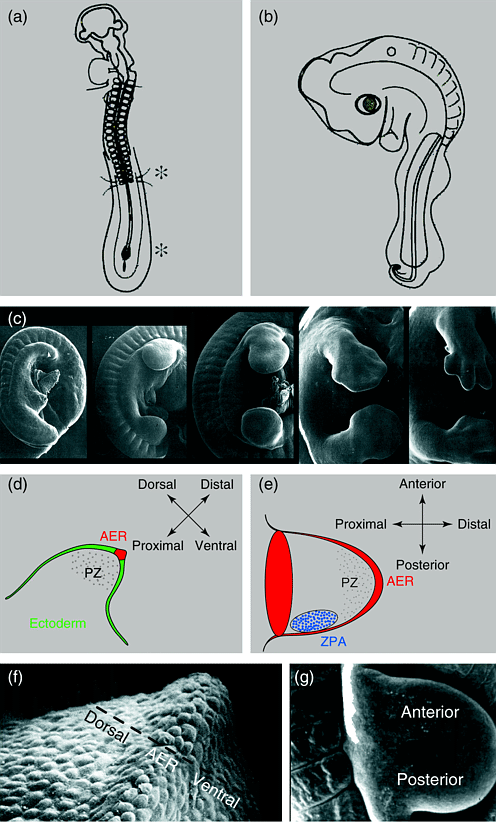
Рис. 1 (a) Презумптивные крыло- и нога-формирующие области покзаны звездочками . (b) будущие конечности появляются в виде небольших протруберанцев, называемых почками конечностей. На этой стадии развития 3 оси будущей конечности уже детерминированы. (c) Серия сканированных электронных микрофотографий эмбрионов мыши, показывающая последовательные стадии развития конечностей. (d, e) Организующие центры (эктодерма; AER, апикальный эктодермальный гребень; PZ, прогрессивная зона; и ZPA, зона поляризующей активности) и оси почки конечности у эмбрионов кур. (f, g) Сканированные электронные микрофотографии 3-дневных эмбрионов кур, показывающие различные области почки конечности.
Figure 1. Limb organizer centres. A chick embryo incubated for two (a) and three (b) days after egg laying. (a) The presumptive wing- and leg-forming regions are indicated by asterisks. (b) 24 hours later, the future limbs appear as small protuberances called limb buds. At this stage of development the three axes of the future limb are already determined. (c) A series of scanning electron micrographs of mouse embryos showing the successive stages of limb development. (d, e) The organizer centres (ectoderm; AER, apical ectodermal ridge; PZ, progress zone; and ZPA, zone of polarizing activity) and axes of the chick limb bud. (f, g) Scanning electron micrographs of a three-day-old chick embryo showing the different regions of the limb bud. [(c) and (f) Courtesy P. Martin, London, UK and K.W. Tosney, Univ. of Michigan, USA, respectively.]
Сайт создан в системе
uCoz